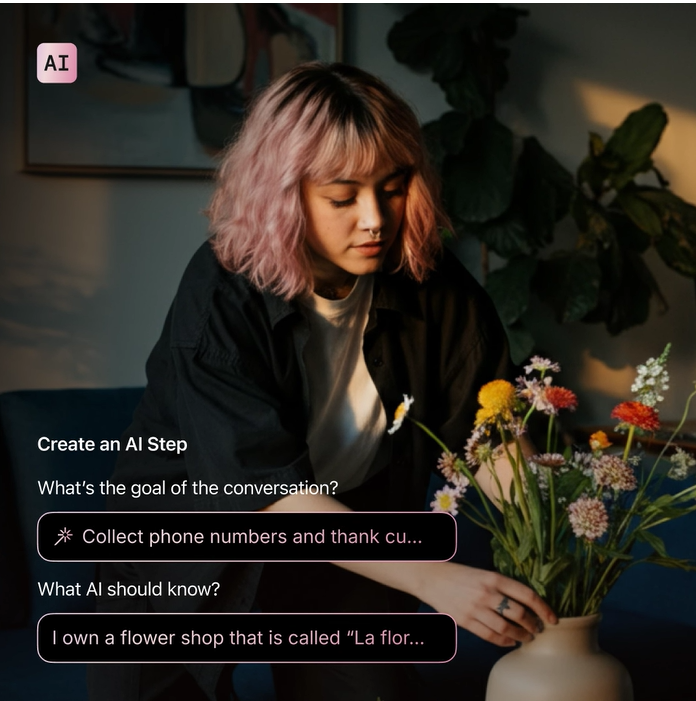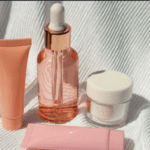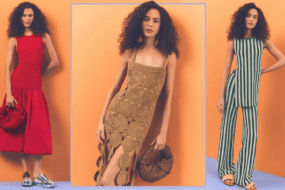
Fashion is a powerful form of self-expression, and it has the ability to reflect personality, culture, and style. However, as much as fashion allows us to show off our individuality, there are certain fashion mistakes or faux pas that can unintentionally detract from our overall look. These common mistakes are often overlooked but can easily be avoided with a little knowledge and attention to detail. In this article, we will explore some of the most frequent fashion faux pas and provide guidance on how to avoid them.
1. Wearing Clothes That Don’t Fit Properly
One of the most common fashion mistakes is wearing clothes that are either too tight or too loose. Whether it’s a dress that hugs you too tightly or pants that are hanging off your waist, ill-fitting clothes can make even the most stylish outfit look unflattering.
How to avoid it: Pay attention to your body type and make sure your clothes fit properly. Clothing that is too tight can create bulges or cause discomfort, while oversized clothing can swallow your figure. Invest in tailoring or alterations to ensure your clothes fit like a glove. A properly fitted garment enhances your body shape and makes you look polished and put-together.
2. Overdoing Trends
Trends are a significant part of the fashion world, but overdoing them can create a look that feels inauthentic or forced. Just because a certain trend is in the spotlight doesn’t mean you should adopt every aspect of it. For example, wearing head-to-toe neon colors, excessive ruffles, or too many patterns at once can overwhelm your look and make it feel chaotic.
How to avoid it: Focus on incorporating trends that resonate with your personal style rather than trying to adopt every passing trend. Choose one or two elements of a trend and blend them with classic or timeless pieces. For example, if bold patterns are in, add a patterned accessory or a statement jacket instead of an entire outfit.
3. Neglecting the Importance of Shoes
Shoes are often overlooked in the pursuit of a stylish outfit, but they can make or break your look. Wearing the wrong shoes—whether they are outdated, uncomfortable, or mismatched with your outfit—can detract from an otherwise well-put-together appearance.
How to avoid it: Choose shoes that complement the rest of your outfit and the occasion. For formal events, opt for elegant heels or polished loafers. For casual outings, sneakers or stylish flats can elevate your look without compromising comfort. Ensure that your shoes are clean and in good condition to maintain a polished appearance.
4. Clashing Colors
Color is one of the most important elements of an outfit. However, combining too many bold colors without a sense of harmony can create a look that feels disjointed. Color clashing is often seen when wearing contrasting shades, such as red and green, without considering balance and coordination.
How to avoid it: Stick to a color palette that complements your complexion and avoid pairing too many clashing colors together. Neutral tones such as black, white, beige, and navy are versatile and easy to mix and match. If you want to add color to your look, balance it with neutrals or monochromatic schemes. Also, consider using the color wheel to understand which colors naturally complement each other.
5. Ignoring the Occasion
Dressing appropriately for the occasion is crucial in the fashion world. Wearing casual clothes to a formal event or over-dressing for a laid-back gathering can make you feel out of place and awkward.
How to avoid it: Always consider the context and dress accordingly. If you’re heading to a job interview, dress in professional, polished attire. For a casual weekend outing, a comfortable yet stylish outfit will suffice. Don’t be afraid to ask about dress codes for specific events, and when in doubt, choose classic styles that work for most occasions.
6. Excessive Accessories
Accessories are an essential part of any outfit, but too many can easily overwhelm your look. Wearing a statement necklace, oversized earrings, bracelets, a belt, and a watch all at once can create a cluttered and busy appearance.
How to avoid it: Select one or two key accessories to complement your outfit. A statement necklace can elevate a simple dress, while a pair of subtle earrings can complete a look without drawing too much attention. If you’re wearing bold accessories, keep the rest of your outfit simple and vice versa. Let your accessories enhance your outfit, not steal the spotlight.
7. Wearing the Wrong Undergarments
Undergarments play a significant role in the overall fit and silhouette of your outfit. Wearing the wrong size or type of undergarment can result in visible lines, bulges, or discomfort, which can undermine your confidence and the look you’re going for.
How to avoid it: Invest in high-quality, well-fitting undergarments that provide proper support and structure. A good bra can lift and shape, creating a smoother silhouette. Consider seamless options to avoid visible lines, especially with form-fitting or light-colored clothes. Also, make sure that your underwear isn’t visible through your clothing—choose the right color and fit for your outfit.
8. Neglecting Grooming
Fashion is not only about the clothes you wear but also about how you present yourself. Neglecting personal grooming, such as not trimming your nails, skipping haircuts, or leaving your clothes wrinkled, can diminish the overall impact of your outfit.
How to avoid it: Incorporate grooming into your routine to ensure that you look your best. Regular haircuts and trims are essential for maintaining a polished look. Keep your nails clean and trimmed, and iron your clothes to remove wrinkles. Personal grooming shows that you pay attention to detail and care about how you present yourself.
9. Over-Accessorizing with Logos
While logos can be a fun way to express brand loyalty or fashion sense, over-accessorizing with prominent logos can come off as tacky or even inauthentic. Large logos plastered across your outfit can overwhelm the design and draw attention away from your overall style.
How to avoid it: Choose subtle branding or limit the number of items with visible logos in your outfit. If you love a specific brand, opt for a small logo on a discreet piece, like a wristwatch or handbag. This way, you can incorporate the brand without letting it dominate your entire look.
10. Wearing Clothes That Aren’t Comfortable
Fashion shouldn’t come at the cost of comfort. Wearing clothes that are too tight, too loose, or made from uncomfortable fabrics can make you feel self-conscious and detract from your confidence.
How to avoid it: Prioritize comfort when selecting clothes. Choose fabrics that feel good on your skin, like cotton, silk, or soft knits. Make sure your shoes are comfortable enough to wear all day, and avoid clothing that makes you feel restricted. Confidence is key to pulling off any outfit, and comfort plays a big role in how you carry yourself.
11. Not Paying Attention to Proportions
The proportions of an outfit can have a major impact on how flattering it looks. Wearing a top that’s too long with pants that are too short, or combining a voluminous coat with tight pants, can create a mismatched appearance.
How to avoid it: Be mindful of the proportions in your outfit. If you’re wearing a loose or oversized top, pair it with more fitted pants or skirts to balance the silhouette. If you choose a voluminous garment, such as a puffed jacket, balance it with slimmer pieces to maintain harmony in your outfit.
12. Overusing Black
Black is a versatile and timeless color, but wearing all-black outfits too often can look a little too severe or monotonous. While it’s appropriate for many occasions, relying on black for every outfit can make your wardrobe feel flat.
How to avoid it: Incorporate color and patterns into your wardrobe to break up the black. Try adding a pop of red, blue, or green with accessories or statement pieces. Layering textures and fabrics can also bring more depth and interest to an all-black outfit.
13. Forgetting About the Weather
One of the simplest fashion mistakes is forgetting to dress appropriately for the weather. Wearing heavy layers in the summer or light clothing in winter can leave you uncomfortable and less stylish.
How to avoid it: Always check the weather forecast before getting dressed and plan your outfit accordingly. In colder months, layer up with stylish outerwear, scarves, and gloves, and in hot weather, opt for lightweight fabrics like linen and cotton. A fashionable outfit should also keep you comfortable and prepared for the elements.
Conclusion
Fashion is about expressing yourself and feeling confident in what you wear. While mistakes are natural, being aware of common fashion faux pas can help you avoid them and ensure that your outfits are both stylish and flattering. The key is to prioritize fit, comfort, and balance, while also choosing pieces that resonate with your personal style. By avoiding these fashion missteps, you can elevate your wardrobe and create timeless looks that reflect your individuality with confidence.






















